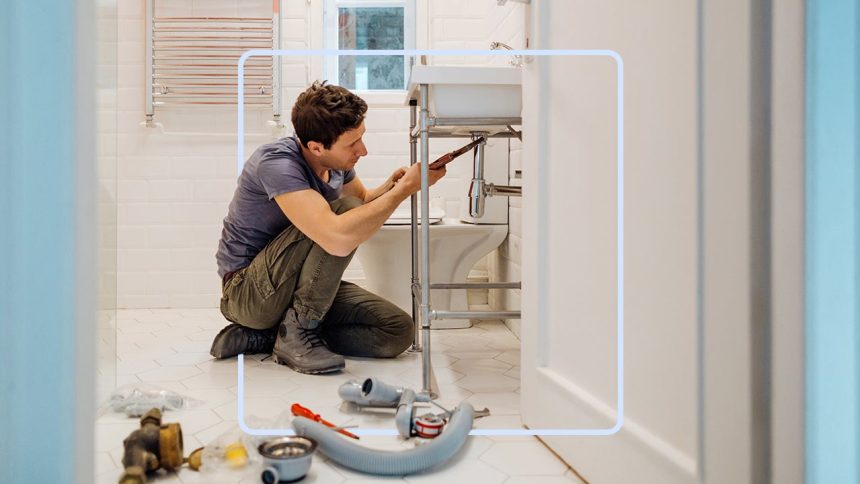Photography by Getty Images; Illustration by Bankrate
Homes are acutely unaffordable, a reality that’s pushing stressed-out buyers to consider fixer-uppers. While older homes might offer bargains upfront, there’s a catch: Aging properties saddle owners with maintenance costs that squeeze budgets and test patience. Homebuyers need nearly $117,000 in household income to afford a home, so buying an older one that needs work isn’t necessarily an ideal solution.
How old are America’s homes?
America’s housing stock is graying. The median age of owner-occupied homes nationally climbed to 41 years old in 2023, up from 31 years in 2005, according to the U.S. Census Bureau. Put another way, the typical American now lives in a home built in the early 1980s or before.
Homes are getting long in the tooth in large part because builders simply aren’t adding new homes at the pace they once did.
“We underbuilt housing from 2013 up until COVID,” says Robert Dietz, chief economist of the National Association of Home Builders.
The sluggish pace of homebuilding after the Great Recession intensified the housing boom of recent years. It’s Econ 101: When demand outpaces supply, prices rise. That’s exactly what’s going on in the U.S. housing market, as an ever-growing population of potential homebuyers vies for an increasingly scarce supply of homes.
Fully 81 percent of aspiring homeowners say the down payment and closing costs pose a “very significant” or “somewhat significant” obstacle to owning a home someday, according to Bankrate’s 2025 Down Payment Survey. The survey found that 18 percent of buyers would consider a fixer-upper as a way to break into an unaffordable market.
Is it better to buy new?
A third of U.S. housing inventory is new construction, while the other two-thirds of properties for sale are existing homes, Dietz says. The state of those existing homes can vary widely, from fully renovated places that need no work to dated structures with shag carpet, linoleum floors, musty basements and failing heating and air conditioning units.
Generally, newer places cost more upfront, while older homes that need work could require ongoing maintenance.
“There’s no such thing as a free lunch,” Dietz says. “With a newer home, you’re going to have the new home price premium, so it’ll be more expensive, but the operating costs will be lower.”
New vs. older home: Pros and cons
Purchase price
New homes are often more expensive than existing homes, at least in terms of acquisition costs. The higher price stems from a combination of inflation, newer homebuilding regulations and more costly materials and finishes.
Most mortgages are based on the value of the home when you buy it; the loan amount doesn’t account for upgrades. However, you might be able to finance repairs as part of the mortgage by taking a HomeStyle Renovation or Federal Housing Administration 203(k) loan, which rolls the purchase price and renovation costs, up to a limit, into one loan.
Home size and features
Home sizes have grown over the years, and lifestyles have evolved. The typical size of a new home built in 2023 was 2,233 square feet, according to the U.S. Census Bureau. In 1982, that figure was just 1,520 square feet. What’s more, older homes often have features that have fallen out of favor, such as formal dining rooms.
Lot size
No, it’s not your imagination. New homes — even large, expensive ones — are being built on smaller and smaller lots. As of 2023, the median lot size of new single-family homes in the U.S. was 8,877 square feet, or a fifth of an acre, the Census Bureau reports. In 2009, the number was 10,994 square feet, or quarter-acre.
Home maintenance costs
In addition to budgeting for a monthly mortgage payment, you’ll also need to set aside money and time to deal with repairs and renovations, typically about 2 percent of the home’s purchase price per year. In that sense, the edge goes to newer homes: They tend to be more energy-efficient, and it should be years before you need to touch major systems such as the roof and heating and air conditioning. Older homes will likely require more spending on maintenance.
Commute times
Housing development has been slow in part because land is scarce. As a result, many new developments are going up in the suburbs and exurbs. If you work from home, great — but if you value a short commute, you might have more luck with existing homes.
Read the full article here
















